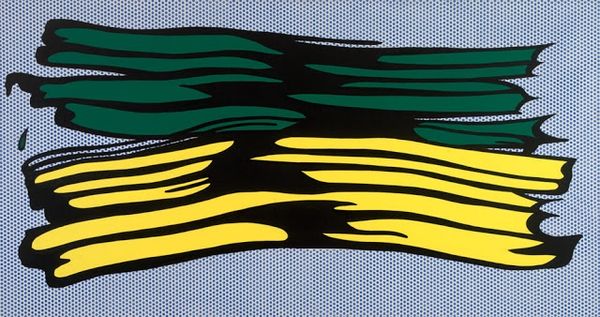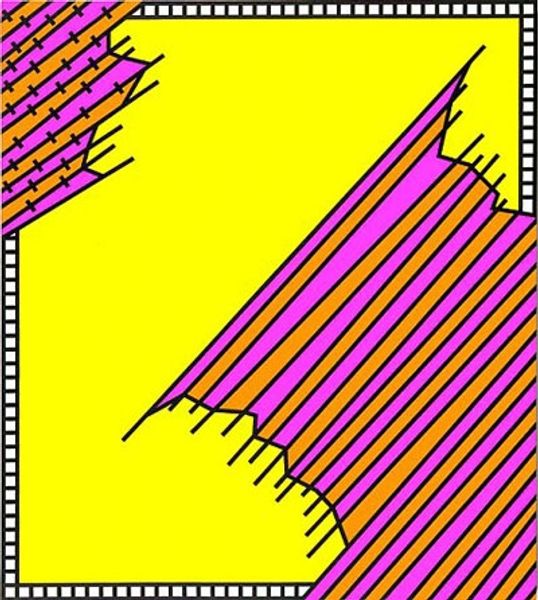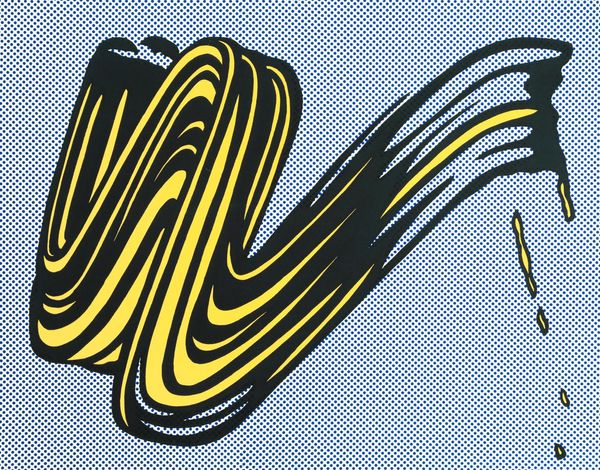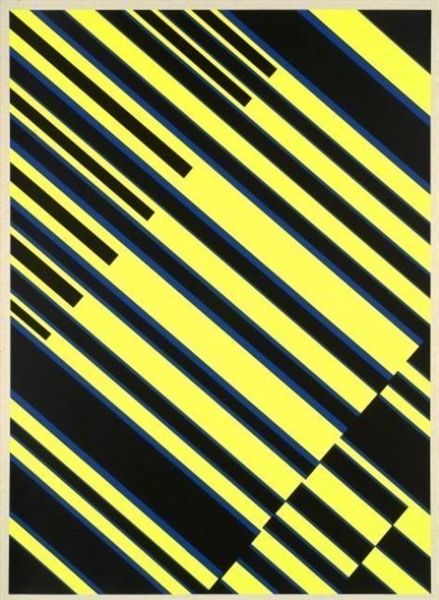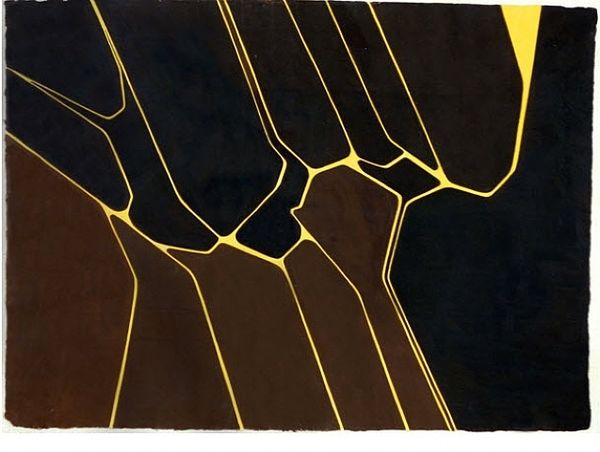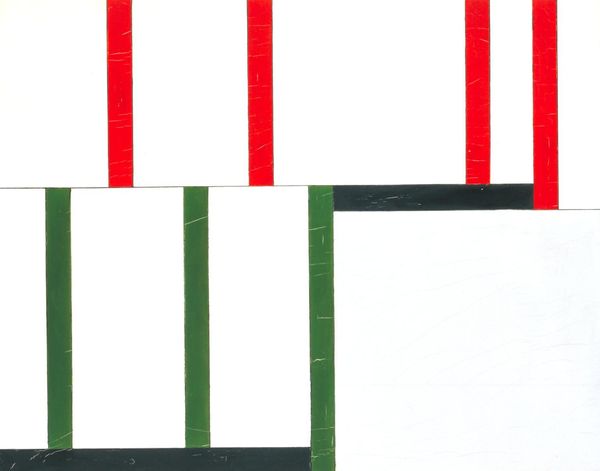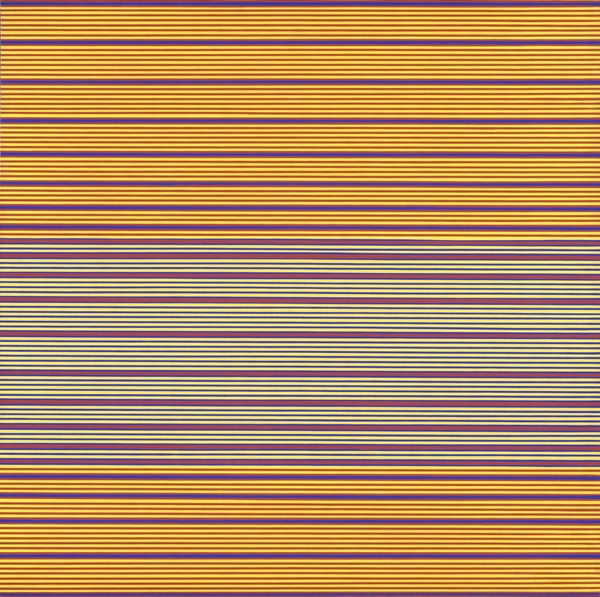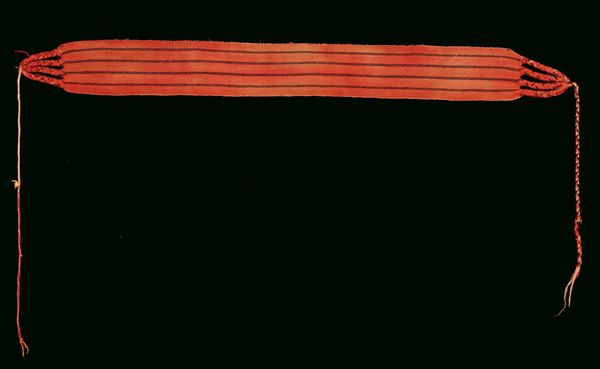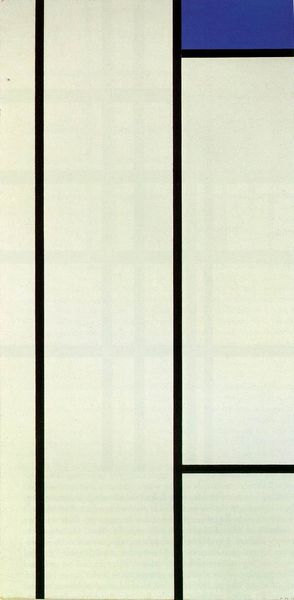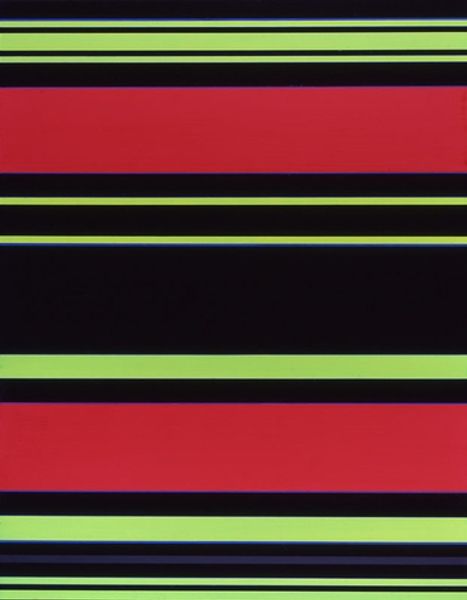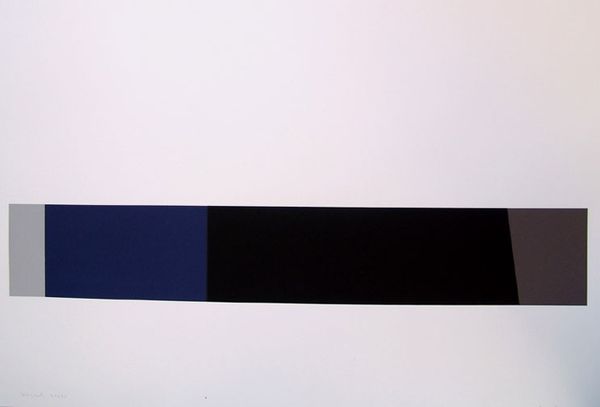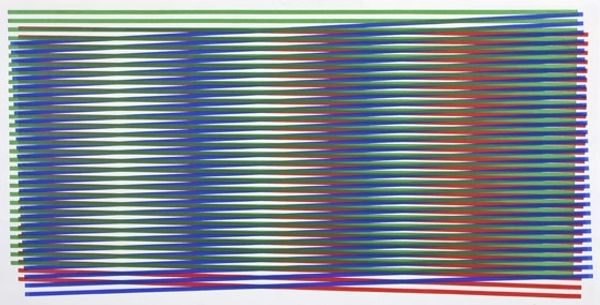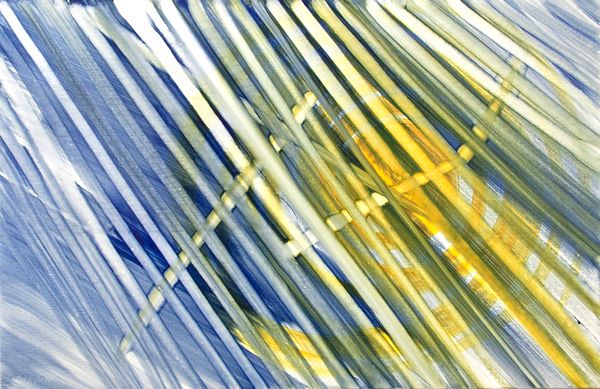
painting, acrylic-paint
#
painting
#
pop art
#
acrylic-paint
#
abstraction
#
pop-art
#
line
#
modernism
Copyright: Roy Lichtenstein,Fair Use
Editor: We're looking at Roy Lichtenstein's "Yellow Brushstroke II," created in 1965 with acrylic paint. It strikes me as a very self-aware painting, almost commenting on the nature of painting itself. What do you see in this piece, particularly from a formalist perspective? Curator: The brilliance of Lichtenstein lies precisely in that self-awareness. Observe the meticulous rendering of the brushstroke. He’s isolating and magnifying what is typically a spontaneous, gestural mark into the central subject. The Ben-Day dots, a hallmark of his style, further abstract and deconstruct the image. Notice how this technique flattens the depth and emphasizes the artificiality of the representation. Do you see the implied tension between the simulated spontaneity of the brushstroke and the mechanical precision of its execution? Editor: Yes, the tension is really interesting. It's like he's taking something inherently expressive and putting it through this almost industrial process. Is he challenging our understanding of what constitutes "artistic expression?" Curator: Precisely! Consider the stark contrast between the bold yellow and black, against the neutral background of Ben-Day dots. It is less about emotional resonance and more about a structural interplay of line, color, and form. The "drips" become graphic elements, devoid of their original implication of process. Instead, we have an emblem, a signifier of "art" rather than the genuine article. Editor: So, by dissecting and re-presenting the brushstroke in this way, Lichtenstein forces us to confront the constructed nature of art and its conventions? Curator: Exactly. He's revealing the underlying structure and artifice inherent in artistic creation. His painting serves as a meta-commentary, inviting the viewer to analyze the building blocks of art rather than passively receiving an emotional experience. Editor: I see it now! It is amazing how much complexity there is in such a simple form. Curator: Indeed. Analyzing its formal components reveals layers of conceptual depth and artistic inquiry.
Comments
No comments
Be the first to comment and join the conversation on the ultimate creative platform.
